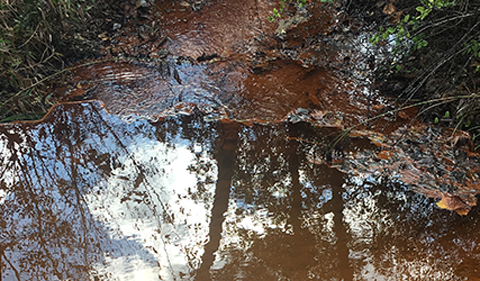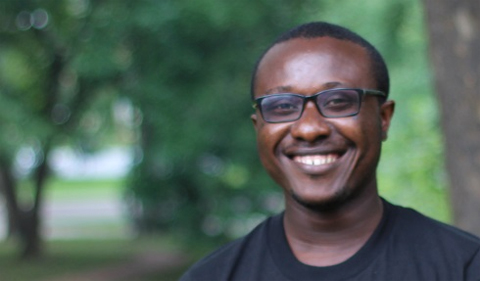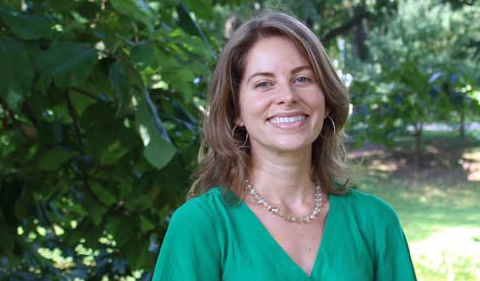
Two Geological Sciences graduate students are helping an interdisciplinary team—Ohio University’s Appalachian Watershed Research Group—assess data collected from regional mining operations in a first-of-its-kind study to better predict how groundwater levels will respond to mining.
The research group has pulled together a team from Geological Sciences and the Voinovich School of Leadership and Public Affairs’ Environmental Studies program to create a geospatial tool to model potentially negative environmental impacts from mining operations in the future.
On the analysis side of the mine tool creation are Lindsey Schafer and Frederick Twumasi, two graduate students under the direction of Dr. Dina López, Professor of Geological Sciences.
Schafer’s understanding of acid mine drainage began during her undergraduate courses as a chemistry major at Ohio University. She began working with Lopez, a faculty member on the Appalachian Watershed Research Group, during her completion of a geology minor. After graduating with her bachelor’s degree in spring 2016, Schafer enrolled in the Geological Sciences program in the fall.

Lindsey Schafer
“With my chemistry background, I got excited because I understood the chemical reactions going on in acid mine drainage,” Schafer said. “When I started working with Dina as a graduate student, I told her I wanted to work on an AMD project.”

Frederick Twumasi
Schafer’s Geological Sciences colleague on the surface mine-pool project, Twumasi, came to Ohio University after earning two degrees at the University of Ghana: a bachelor’s in geology and a master’s in mineral exploration. Twumasi’s research work in gold mines led him to explore other environmental issues, including acid mine drainage, in extraction-based activities more broadly.
“I love chemistry, I love geology – the combination of the two makes me who I am,” Twumasi said. “So I asked myself, ‘How can I relate that to the environment?’ I really, really wanted to do environmental geochemistry because I feel the environment is all we have and its protection and management should be everyone’s goal.”
The Geological Sciences team includes Schafer conducting multi-variable statistical analysis on the morphological and geological data mined from these extremely lengthy datasets.
One of the challenges with unpacking this data, Schafer said, is determining the exact elevation and aquifer rock-layers identified in the surrounding region, with minimal geographic information on the wells based on years-old permits.
“In Ohio, sometimes they’re very hard to identify because the layers are very thin, so it’s hard to determine where those differentiating layers are,” Schafer said.
Understanding where the water wells intersect with different layers of rock among different aquifers may help prevent drinking water contamination from the likes of acid mine drainage.
The ultimate goal of the project, with guidance from the Appalachian Watershed Research Group’s senior technological expertise, is to create a GIS-based prediction tool to prevent future environmental disruptions – and economic costs – from acid mine drainage impacts.
“Acid mine drainage is a very expensive reclamation problem in Ohio. Instead of spending all this money to fix it after the mine has already been exploited, it would be more beneficial to try and reduce the environmental impact of the mines before they go in and start mining,” Schafer said.
In early December 2017, the Research Group team previewed their preliminary research findings to representatives from the Ohio agencies and mining industries whose data the project group has been utilizing for the past 6 months.
“It was more interactive,” Twumasi said, reflecting on the meeting. “We told them what we found, they also told us what they really expect from us, and at the end of the day they were so happy at the progress we’ve made.”
- Read the rest of the story at “Appalachian Watershed Research Group mines data in unique study to protect water quality in southeast Ohio.”



















Comments